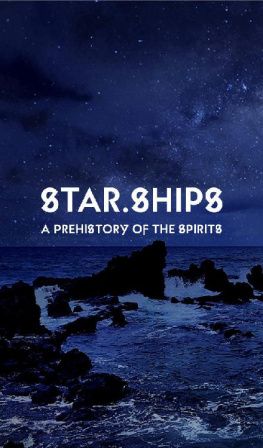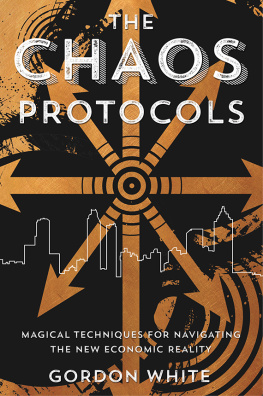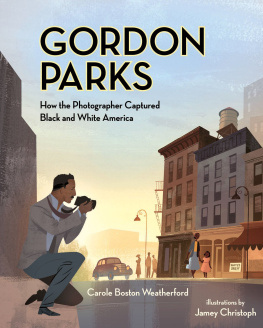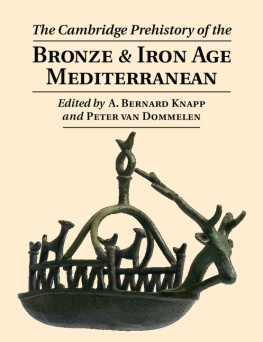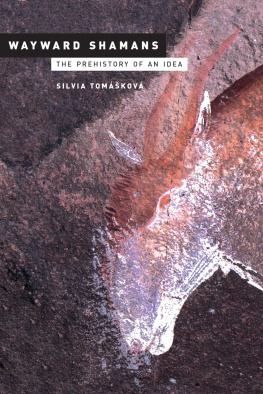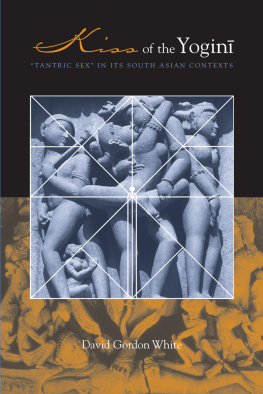Gordon White - Star.Ships: A Prehistory of the Spirits
Here you can read online Gordon White - Star.Ships: A Prehistory of the Spirits full text of the book (entire story) in english for free. Download pdf and epub, get meaning, cover and reviews about this ebook. year: 2016, publisher: Scarlet Imprint / Bibliotheque Rouge, genre: Religion. Description of the work, (preface) as well as reviews are available. Best literature library LitArk.com created for fans of good reading and offers a wide selection of genres:
Romance novel
Science fiction
Adventure
Detective
Science
History
Home and family
Prose
Art
Politics
Computer
Non-fiction
Religion
Business
Children
Humor
Choose a favorite category and find really read worthwhile books. Enjoy immersion in the world of imagination, feel the emotions of the characters or learn something new for yourself, make an fascinating discovery.
- Book:Star.Ships: A Prehistory of the Spirits
- Author:
- Publisher:Scarlet Imprint / Bibliotheque Rouge
- Genre:
- Year:2016
- Rating:4 / 5
- Favourites:Add to favourites
- Your mark:
- 80
- 1
- 2
- 3
- 4
- 5
Star.Ships: A Prehistory of the Spirits: summary, description and annotation
We offer to read an annotation, description, summary or preface (depends on what the author of the book "Star.Ships: A Prehistory of the Spirits" wrote himself). If you haven't found the necessary information about the book — write in the comments, we will try to find it.
Gordon White: author's other books
Who wrote Star.Ships: A Prehistory of the Spirits? Find out the surname, the name of the author of the book and a list of all author's works by series.
Star.Ships: A Prehistory of the Spirits — read online for free the complete book (whole text) full work
Below is the text of the book, divided by pages. System saving the place of the last page read, allows you to conveniently read the book "Star.Ships: A Prehistory of the Spirits" online for free, without having to search again every time where you left off. Put a bookmark, and you can go to the page where you finished reading at any time.
Font size:
Interval:
Bookmark:
STAR.SHIPS
Gordon White
STAR.SHIPS
A PREHISTORY OF THE SPIRITS
BIBLIOTHQUE ROUGE
MMXVI
Star.Ships: A Prehistory of the Spirits was published by Scarlet Imprint in 2016 under the Bibliothque Rouge banner. Copyright Gordon White. Typography and cover designs by Alkistis Dimech. Text set in Magma Pro, with titling in Anacharsis. Cover image: Rocky Shore And Sea Against Sky At Night by Rahmat Ahmadi / EyeEm. With thanks to Paul Holman for copy editing. The digital edition was created by CPI Antony Rowe.
eISBN 978-0-9931200-8-4
All rights reserved: no part of this book may be reproduced in any form, by print, or any other means, without prior permission being sought and obtained in writing from the publisher.
WWW.SCARLETIMPRINT.COM
CONTENTS
ILLUSTRATIONS

Prologue
THE MISSION AT THE END OF THE WORLD
The Sepik is the greatest river no one has ever heard of. Winding like a cosmic serpent down from the New Guinea highlands, it has the fifth largest annual flow on the planet. Lacking a delta for her mouth, she stains the ocean brown for miles. Such is her volume, it is said that the local boatmen can draw fresh water straight from the sea. People have been living and dying on her banks for more than 40,000 years. She has welcomed and bid depart to whole cultures. She is untroubled by Ice Ages. My aunt was born on the banks of the Sepik and my grandfather once ran the province so named for it.
It is a place of curious survivals, of forgotten things. Up in the highlands, claims of seeing living examples of Homo floresiensis the famous Indonesian hobbit believed to have died out ten millennia ago persist into modern times. The day my aunt was born, four Japanese soldiers, who had been hiding among the natives of Dutch New Guinea for the ten years since the war, arrived in the province capital of Wewak. They boarded a ship, the Taisei Maru, which had come to collect the remains of the wardead and return them to Japan. My grandmother covered the story for the Australian Broadcasting Corporation and then went into labour that night.
Stories are perhaps the most curious of survivals. They can fall in and out of remembrance. Who is telling them often matters more than how they are stored. For probably tens of millennia it was the shamans and sorcerers who kept the stories of the tribes, who held the mirror of identity and meaning up to their people. Like so much in the West, this function has been outsourced from us with predictably disastrous local consequences. In the mid-twentieth century, academia became aware that our understanding of knowledge is always situational and always contingent on cultural institutions that create that knowledge. But by then it was too late. Our stories had passed from us. This was too much power to hand over. It was a bad deal.
Any given field makes truth statements that form a network of relationships with themselves, governed by a worldview that establishes what is or is not knowledge within that field. Stories that fall outside this network first become untrue, and then they fade completely from reality. In the early years of the twenty first century, the empowered, informed shaman is presented with the opportunity to rescue these fading stories from the spirit world and restore them to the tribe. As with all journeys to the spirit world, dangers abound for the unprepared. Discretion, parsimony and evidence-based reasoning, now that they exist in the wider culture, belong here as much as they do in the hard sciences. These are the fetishes we must carry to extract truthful stories from the spirits.
Although not my own, one more Sepik story is illustrative of the prey we seek and the nature of its habitat. In his classic Eden in the East, Dr Oppenheimer, while on medical patrol in the early 1980s, was treating an American woman who was living, along with her husband, among a tribe that had only been first discovered the previous year. These Americans were missionaries of a new kind. Instead of teaching English to the tribe so that they may read the Bible, the Americans were there to learn the local language so that they could return to the Midwest and have an indigenous Bible printed. It occurred to Dr Oppenheimer that once these missionaries had left, the tribe would be filled with foreign stories and legends of Moses and the flight from Egypt, of Noah, of Jesus with no archaeological or genetic evidence indicating how these tales arrived in the first place. They would just be there, a memory of an imprint. Israelites standing uncomfortably under a banana tree spirit, warily eyeing the ancestral death masks, like confused foreign guests at a wedding reception. The Sepik keeps these ghosts, and many similar, older ones besides.
Stories, then, can move in a way pottery or malarial adaptations cannot. All archaeological evidence of contact is accompanied by cultural evidence, but not all culturalevidence of contact is accompanied by archaeological evidence. Stories can echo and refract through and beside the scientific story of mankind. They are special artefacts that cry out for a unique method of analysis. They are challenging prey to hunt.
After a childhood of wide-ranging Pacific travel, it was studying documentary film-making and cross-cultural studies that first opened up whole new vistas of comparative mythology for me. While still a student, I bought a very expensive camera to take SCUBA diving for sunken cities in Micronesia. This adventure is my own personal BC/AD pivot point. Nothing would be quite the same afterward.
Built from millions of tonnes of prismatic basalt and stretching over eleven square miles of mangrove swamp, the necropolis of Nan Madol is the most enigmatic site in the entire Pacific. One of the great joys of my life was canoeing along its canals, exploring its tombs and platforms, and diving in the murky, shark-infested water beside it, looking for evidence of earlier occupation.
The place is so completely out of context with everything else around it for hundreds of miles that Nan Madol feels like it should be a truly archaic survival, a relic of a long-vanished race. It isnt. Almost the only thing we know with any confidence about Nan Madol is when construction began on the current site, around the twelfth century. There are older buildings in London!
How Nan Madol was built, why it was built, where the millions of tonnes of basalt came from, the reason for choosing its location these are examples of advanced cultural technology that have moved through time without corresponding archaeological evidence. When it was built is almost the least significant part of its story. The irreconcilability of Nan Madols mythology and its physical presence has stayed with me since that expedition.
Such an extreme disconnect between the physical and non-physical evidence is familiar territory for magicians. In the performance of it, magic feels supremely ancient. Even its most modern iterations feel like they were old when the world was new. Intellectually we know this is not the case, but we also know somehow that it probably is.
FURTHER RIVER SPIRITS
This book was not written on the banks of the Sepik, though she does feature in its tale. It was written on the banks of the Thames, the Tiber, the Hudson and the Seine, but the story is always the same because river spirits are always the same: How long have we been here? Who came before? Where did they go? Who or what answered their night prayers, and at what cost? Civilisation is the tobacco of river spirits. They seem to crave it, to will it into being up and down their banks, even though the relationship appears damaging over the long term.
Next pageFont size:
Interval:
Bookmark:
Similar books «Star.Ships: A Prehistory of the Spirits»
Look at similar books to Star.Ships: A Prehistory of the Spirits. We have selected literature similar in name and meaning in the hope of providing readers with more options to find new, interesting, not yet read works.
Discussion, reviews of the book Star.Ships: A Prehistory of the Spirits and just readers' own opinions. Leave your comments, write what you think about the work, its meaning or the main characters. Specify what exactly you liked and what you didn't like, and why you think so.

